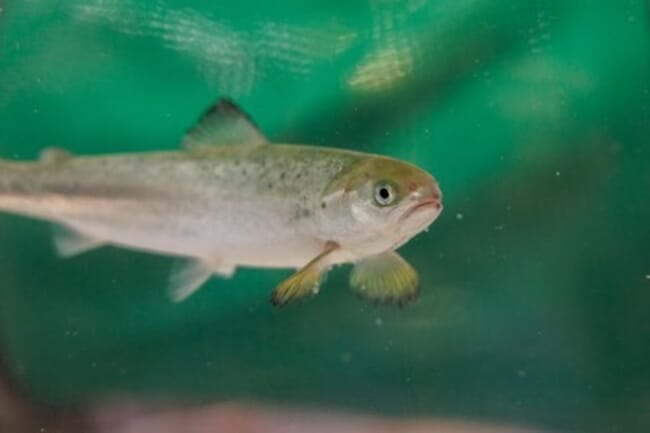
© Terje Aamodt
These findings, published in the journal, Ecotoxicology and Environmental Safety, offer new insights that could impact fish health management in land-based farming environments.
Hydrogen sulphide, a toxic gas that can form in RAS, particularly under conditions of elevated salinity, poses a known risk to salmon health. Even minimal concentrations of H2S have been associated with health issues and increased mortality rates in salmon. The study focused on the effects of continuous, low-level H2S exposure on salmon, a situation that can commonly occur during standard operations in RAS.
The research primarily explored how the salmon's mucosal surfaces, including the skin, gills, and olfactory organ (nose), respond to such exposure. These surfaces are the first line of defence against environmental hazards.
Key findings indicate that when salmon are exposed to hydrogen sulphide, their gills and olfactory organs activate specific genes related to stress responses and immune system function. The study also highlights the salmon mucosae's natural capacity to detoxify hydrogen sulphide. Moreover, the researchers identified several protein markers in the mucus from the skin and gills, which could be utilised for non-invasive testing to gauge H2S exposure.
Project leader Carlo Lazado of Nofima commented, "Our findings suggest that salmon can adapt to the low H2S levels tested, without experiencing serious adverse health effects. This is encouraging news for the aquaculture industry, but it also emphasises the need for vigilant monitoring and control of H2S levels in RAS facilities."
The implications of these findings are significant for improving the management of Atlantic salmon in land-based farming systems. The researchers suggest that these insights could lead to better risk assessments and the establishment of more precise H2S threshold values within RAS environments. This could, in turn, help develop new standards aimed at bolstering salmon resilience to H2S exposure.
This study marks a step forward in the pursuit of more sustainable and efficient land-based salmon farming, prioritising both fish welfare and production quality. The findings are particularly pertinent for land-based farms, where H2S levels are typically higher than in open-sea operations. By closely monitoring and managing H2S concentrations and enhancing the fish's natural defence mechanisms, farmers can promote healthier and more productive salmon populations.
Further details from this research will be presented by Carlo Lazado at the Smolt Production in the Future conference, scheduled for 16-17 October 2024.




